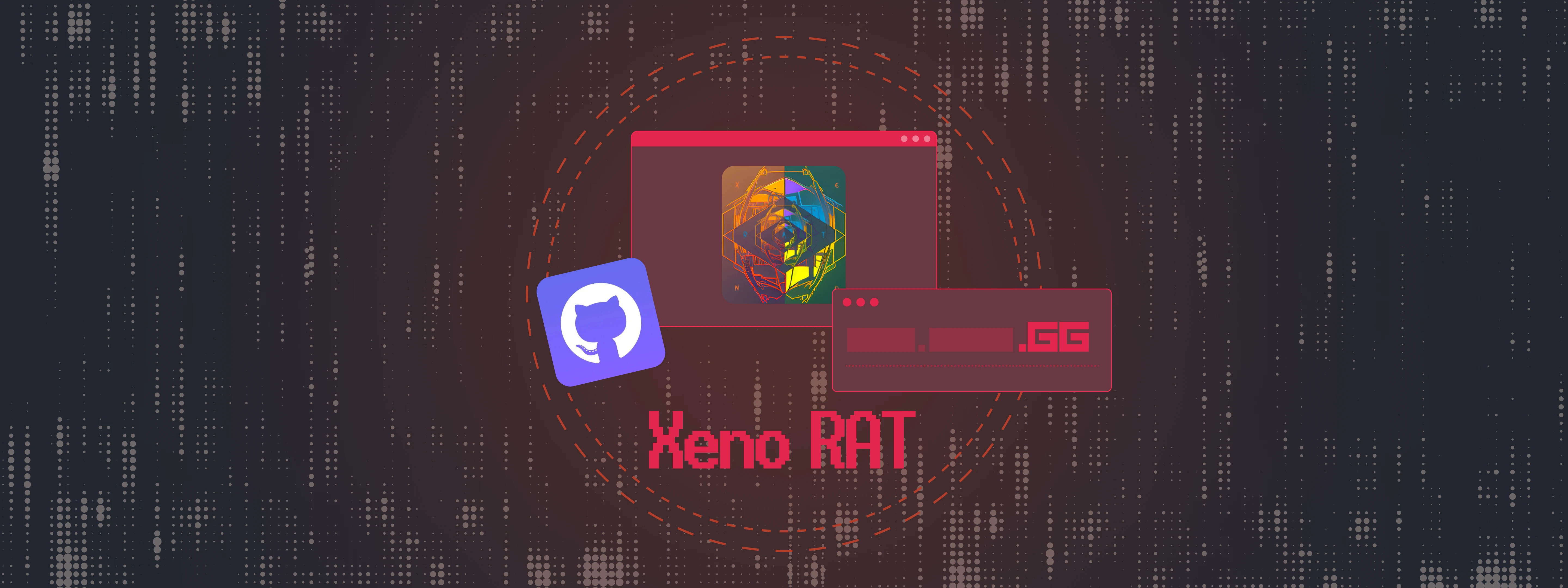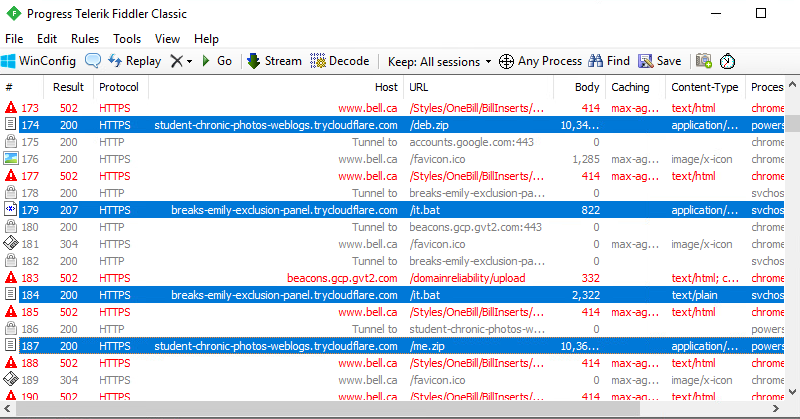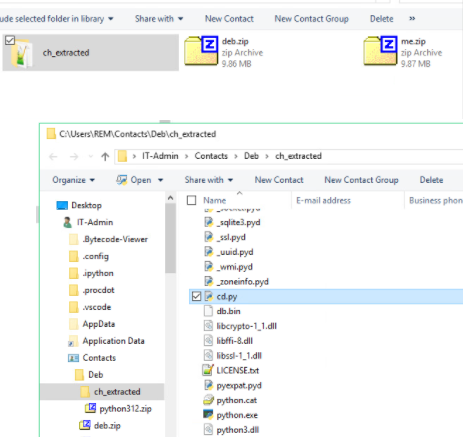Shortcut to Infection
XenoRAT via Malicious .lnk → WSF → Python
A fake invoice lure leads to a shortcut (.lnk) that fetches a WSF, stages dual ZIP archives (me.zip, deb.zip), and launches pythonw.exe from the user’s Contacts directory. Explorer.exe then takes over network comms, connecting to C2.

This post walks through the staged chain step-by-step, showing how a malicious LNK file pivots to XenoRAT.
The chain demonstrates how attackers adapt post-macro era tactics:
- Shortcut files replace Office macros.
- WSF and PowerShell fetch self-contained Python runtimes.
- Staging occurs in an unexpected user folder (Contacts).
- Legitimate system binaries (Explorer.exe) handle C2 comms.
The result: a stealthy, modular deployment of XenoRAT under the guise of an invoice.
The Invoice Lure
The campaign begins with a ZIP attachment named like:
Rechnung 92658.zip
Inside is a shortcut file (Rechnung-92658.pdf.lnk), disguised to look like an invoice.

When clicked, the .lnk does not open a PDF, but instead retrieves a WSF (Windows Script File) hosted on a disposable Cloudflare subdomain.
Threat Chain in Action
The observed infection chain was:
URL → zip → .lnk → zub.wsf → me.zip + deb.zip → pythonw.exe → explorer.exe → C2
Expanded view:
- Victim downloads and extracts ZIP.
.lnkreaches out to:https://breaks-emily-exclusion-panel[.]trycloudflare[.]com/Downloads/Rechnung-92658.pdf.lnk- Fetches and executes zub.wsf:
https://breaks-emily-exclusion-panel[.]trycloudflare[.]com/at/zub.wsf - WSF spawns PowerShell, downloading two more ZIPs:
me.zipdeb.zip
- Archives unpack into the Contacts folder:
C:\Users\[user]\Contacts\Deb\ch_extracted\ - Launch command observed:
pythonw.exe cd.py + db.bin + k.txt explorer.exeassumes network activity, maintaining C2 sessions.- Meanwhile, the victim is shown a fake Bill invoice page as distraction.
 \
\
Open Directory Listings
The actor’s infrastructure is barebones: open WsgiDAV directories exposing payloads.
Files seen:
| File | Size | Type |
|---|---|---|
a.txt |
0 B | TXT |
b.txt |
0 B | TXT |
me.zip |
~10.3 MB | ZIP |
deb.zip |
~10.3 MB | ZIP |
win.bat |
302 B | BAT |
Staging Under Contacts
Instead of common AppData or Temp directories, the chain drops Python runtime and scripts under Contacts — an unusual but stealthy choice.
 \
\
The extracted bundle included:
pythonw.execd.pydb.bin- Multiple
.pydand.dllsupport files
Process Lineage & RAT Strings
Dynamic analysis shows the process tree:
cmd.exe → pythonw.exe → explorer.exe
Strings recovered from memory clearly reference “xeno rat client” components, handlers, and managers.
 \
\
Network Activity
Explorer.exe maintains outbound TCP sessions to the attacker’s C2:
144[.]126[.]202[.]249:8789
 \
\
This abuse of explorer.exe as the network-facing process is highly evasive: many defenses don’t expect Explorer to manage TCP sessions.
Indicators of Compromise (IOCs)
Domains & URLs
breaks-emily-exclusion-panel[.]trycloudflare[.]com/Downloads/Rechnung-92658.pdf.lnk
breaks-emily-exclusion-panel[.]trycloudflare[.]com/at/zub.wsf
student-chronic-photos-weblogs[.]trycloudflare[.]com/me.zip
student-chronic-photos-weblogs[.]trycloudflare[.]com/deb.zip
bell[.]ca/Styles/OneBill/BillInserts/ (used as decoy)
Files
Rechnung 92658.zip
Rechnung-92658.pdf.lnk
zub.wsf
me.zip
deb.zip
win.bat
cd.py
db.bin
k.txt
Network
144[.]126[.]202[.]249:8789 (C2)
MITRE ATT&CK Mapping
| Tactic | Technique |
|---|---|
| Initial Access | T1566.002 – Phishing: Link |
| Execution | T1204.002 – User Execution (.lnk) |
| Execution | T1059.007 – Command & Scripting: WSF/JScript |
| Execution | T1059.001 – PowerShell |
| Defense Evasion | T1036 – Masquerading (invoice lure, Contacts staging) |
| Command & Control | T1105 – Ingress Tool Transfer (ZIP downloads) |
| Command & Control | T1071.001 – Application Layer Protocol: Web (via Explorer) |
Detection & Mitigation
- File-based: Flag
.lnkand.wsfinside archives; monitor Contacts folder for executables. - Process-based: Alert on
pythonw.exeor scripts executed from unusual paths. - Network-based: Block Cloudflare subdomains serving scripts/archives; alert on Explorer.exe establishing TCP.
- Hardening:
- Show known file extensions.
- Restrict script engines (
wscript,cscript,powershell,pythonw). - Deploy Sysmon rules for:
- Event 1: Explorer.exe → scripting engines
- Event 3: Explorer.exe network connections
Defenders should tune detection around .lnk + .wsf chains, flag odd process ancestry, and watch for system binaries behaving like malware.


